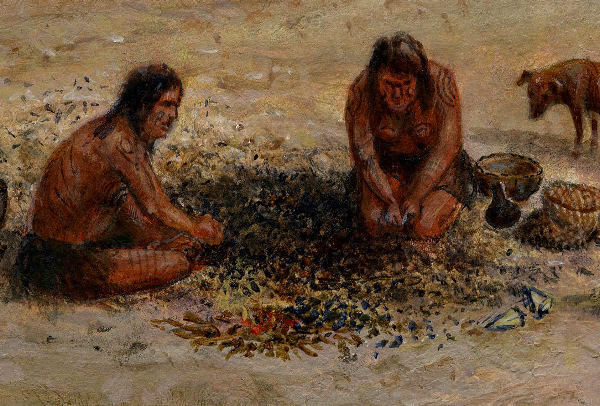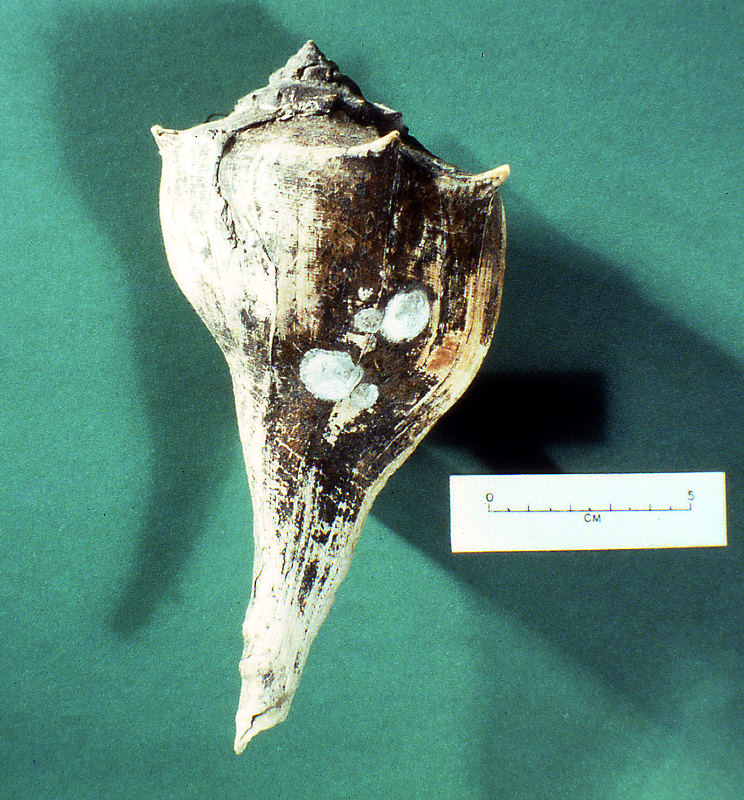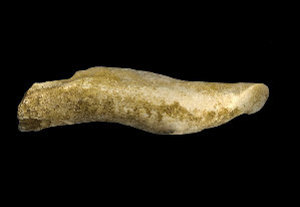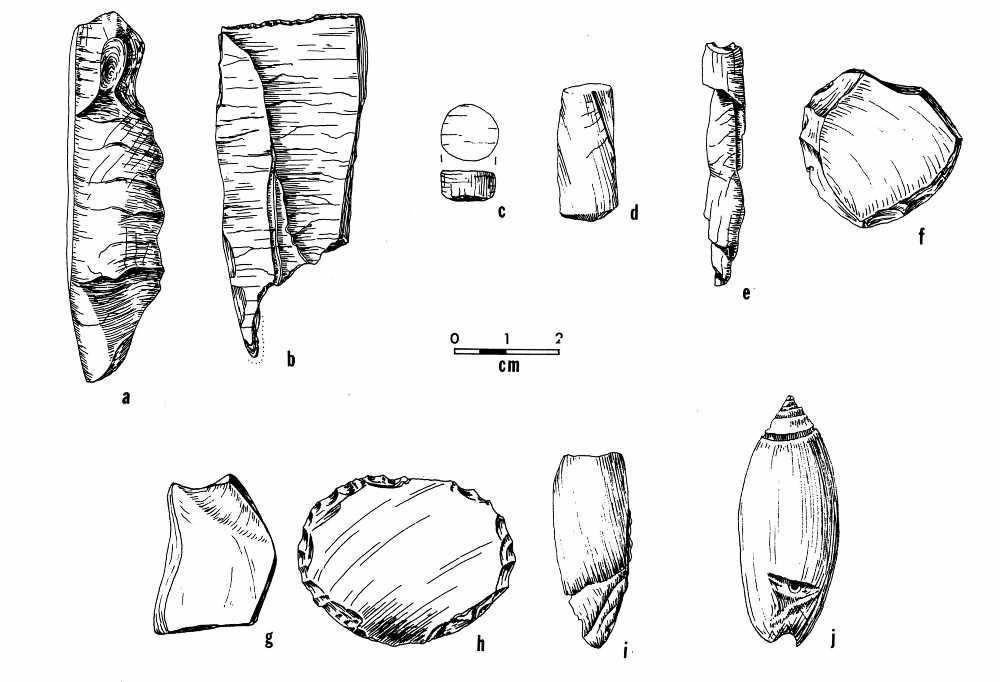
Shellfish are cleaned and processed around the campfire. The worker on the left is making a tool from a shell, while the woman at right opens some clams that have steamed briefly on the fire. The result if this activity is a large debris pile of shells.
Shell working. Mollusks were important food resources, but their shells may have been equally as important in prehistoric subsistence. Toolstone, such as chert, was not readily available along the coast, and shell provided a useful substitute. Coastal peoples were skilled and creative in shell technologies, utilizing a variety of mollusks in their work. The large shells of whelk and conch were used for both tools and ornaments. Unmodified, the heavy shells could be used as hammers; with several cuts, the inner columella became adzes and gouges for woodworking. Whelk and oyster shells, when perforated, became effective net weights for fishing. The straight edges of bivalves, such as sunray venus clams, could be used with little modification as knives and scrapers. Flat sections, or blanks, cut from various shells were made into arrowpoints as well as disc beads.



Whelk columella "gouge" from the Late Archaic Mustang Lake site (41CL3). The angled, ground facet at top is the working edge of this tool. Photo by Bob Ricklis.
Array of shell tools and ornament materials from the Kirchmeyer site 41NU11. A-b, conch awls; c-d, bead performs; e, whelk columella awl; f-g. modified Southern Quahog; h; Sunray clam disc; o-j, modified olive shells. Drawings by Pam Headrick (The Archeology of 41NU11, the Kirchmeyer Site. Studies in Archeology 15, TARL, Universiity of Texas at Austin 1993). Enlarge to see full image.